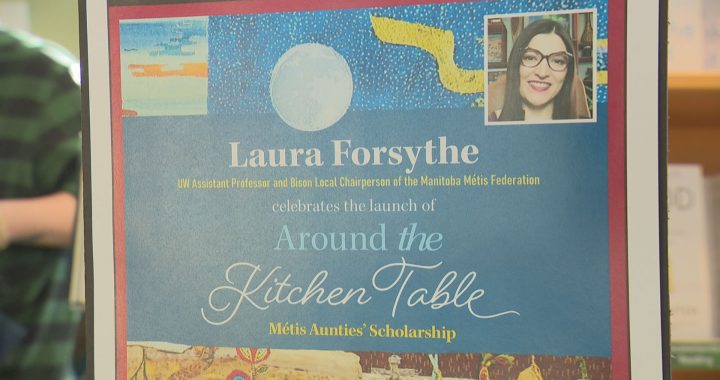(The flashdrive holding 4,900 death records passed from the British Columbia government to the Truth and Reconciliation Commission on Friday. APTN/Photo)
By Jorge Barrera
APTN National News
In the summer of 1920 Augustine Allen made a suicide pact with nine other boys who were attending St. Joseph’s Indian residential school in British Columbia.
Allen was the only one who followed through with the pact, chewing and swallowing poisonous roots to find death. His family was never told where his body was buried. He was about nine years old at the time.
“They never told my family he died,” said Esk’etemc First Nation Chief Charlene Belleau. “We want to find his grave. Part of our family’s closure will be when we find his remains and are able to take him home.”
Belleau hopes her great uncle’s name will be found among the 4,900 death records the British Columbia government transferred to the Truth and Reconciliation Commission (TRC) on Friday. The records include all deaths of First Nations children and youth aged four to 19 between 1870 and 1984.
“I don’t know if it is there, I have asked, but they are not sure,” she said.
Through its Missing Children Project, the TRC is currently trying to get an accurate count of the number of children who died in residential schools, the causes for their deaths and where they are buried. The commission has so far confirmed about 4,100 deaths, but expects the number to rise. TRC researchers are also tracking down cemeteries through death records, historical correspondence, the testimony of survivors, photographs and the use of ground penetrating radar.
On Monday, the Alberta government quietly turned over 41 DVDs containing about 10,000 death records of First Nations people who died between 1923 and 1945. TRC researchers will now sift through the records to determine which ones died in one of the province’s 25 residential schools.
The TRC has requested death records of First Nations children and youth during the residential school era from every province and territory. Quebec is the only province that has so far ignored the request.
Nova Scotia, which was home to the Shubenacadie residential school, recently turned over 127 death records from 1922 to 1968. Thirteen of the records were of students who died in the residential school.
Kimberly Murray, executive director of the TRC, said obtaining death records from Ontario remains a daunting task. The province, which had about 17 residential schools, has the oldest records and the largest collection, but none of them are yet digitized.
Counting the dead and finding where they lie is one of the toughest tasks facing the TRC which has a little over a year left in its mandate. The commission’s final report will include a chapter on the deaths and it will be the last one written because researchers expect the numbers to continue to grow right up to the printing deadline. The final report will also include recommendations on how to maintain the search for the lost children.
So far, in addition to combing through 7,000 survivor statements, TRC researchers have based their current tally on records from Aboriginal Affairs and Health Canada. The recent influx of provincial documents from B.C. and Alberta will now be added to the mix. TRC researchers will also soon be searching through the RCMP’s closed records held by Library and Archives Canada.
With limited resources and a slow drip of new records, researchers have been forced to rely on clues in other historical evidence to track down deaths in the schools. In one instance, researchers used an invoice sent by a church to Ottawa for the cost of wood used for coffins to track down possible deaths.
Finding where the children are buried is, in some ways, more difficult. Many of the cemeteries are overgrown and unmarked, lost in time and memory. The TRC has so far located about 50 cemeteries and, on a few occasions, used ground penetrating radar to confirm the existence of bodies below, said Murray.
Researchers have also been forced to piece together fragments in the historical record to find where the children are buried. In one instance, a letter surfaced from a residential school principal to one of the churches describing how a full burial ground had forced the school to bury children across the street.
Irene Cowley, 79, lost two uncles to the Elkhorn residential school in Manitoba. She doesn’t know how they died or what their first names were. All she knows is what was passed on to her by her father Roderick John Head who was their younger brother.
“They didn’t bring their bodies home. They don’t know where they are buried,” said Cowley, who attended St. Alban’s and All Saints residential school in Saskatchewan.
While at residential school, Cowley was forced to watch over a mentally ill girl named Stella Sapp who was strapped to a bed under a stairwell. She said she hopes that a death records search in Manitoba will turn up her lost uncles.
“They just have to search the name ‘Head,’” said Cowley, who remembers that Sapp constantly yelled out for her mother and father. “It would be nice to know where they are buried.”
@JorgeBarrera










I am so glad this is finally happening. It will be a daunting and horribly sad task for those who are undertaking it. My sympathies are with all of you.